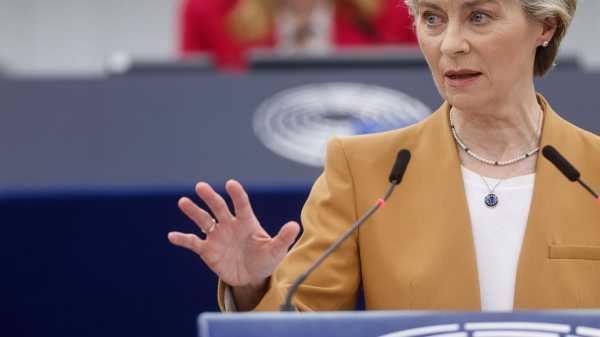
BRUSSELS — The European Union moved closer to ending a trade dispute with U.S. President Joe Biden on Wednesday following months of wrangling over the billions of America-first incentives in his clean technology plans and said it would ramp up a similar subsidy-laden effort at home.
European Commission President Ursula von der Leyen told the parliament plenary that in its attempt to produce at least 40% of the clean tech needed by 2030 in the 27-nation bloc, it would allow for the “tax breaks and the flexible use of EU funds” on top of simplifying and speeding up industrial approvals.
She spoke of a “striking symmetry” between the U.S. efforts and the European Green Deal plans.
“Both of them are simultaneously a climate strategy and a strategy for investment and growth,” von der Leyen said.
Her upbeat comments came on the eve of the European Commission, the EU’s executive arm, tabling plans for the Net-Zero Industry Act on industrial incentives and a Critical Raw Materials Act, which seeks to reduce EU over-reliance on China when it comes to new tech materials like rare earth supplies and lithium.
Since the EU does have such minerals too, the plan calls to boost capacity to at least 40% of consumption and make sure that recycling is improved too.
It all amounts to a major effort that the EU needs to push through to remain relevant in a future where green technologies will become the standard and strategic economic independence paramount in a world of quickly shifting alliances and developments.
It made it all the more essential for the EU and Washington to find a truce on the trade spat that has divided them since last summer when Biden’s $375 billion clean energy law was passed.
“In other words, the two biggest and most advanced economies in the world are now moving in the same direction,” she told the lawmakers.
Sourse: abcnews.go.com